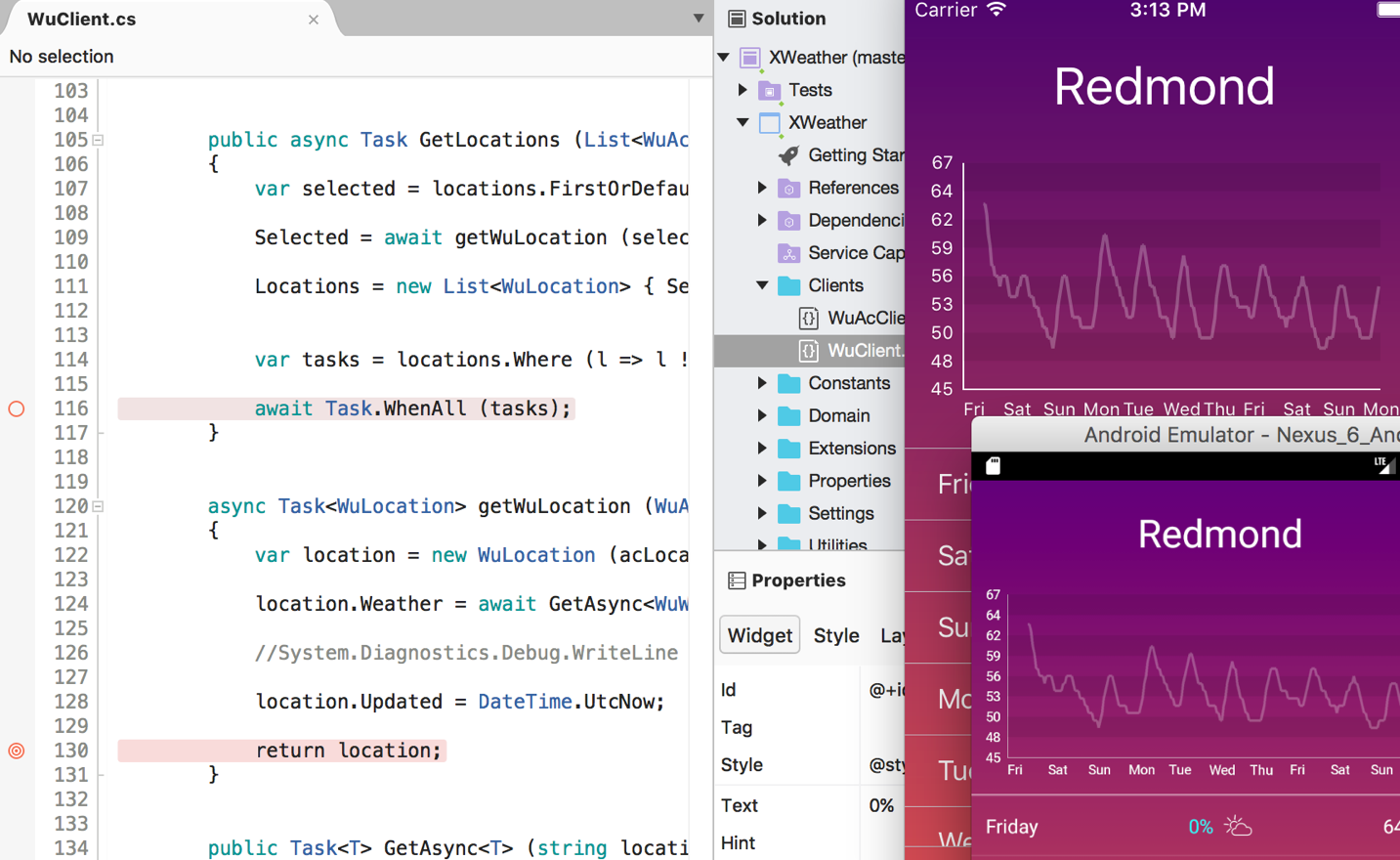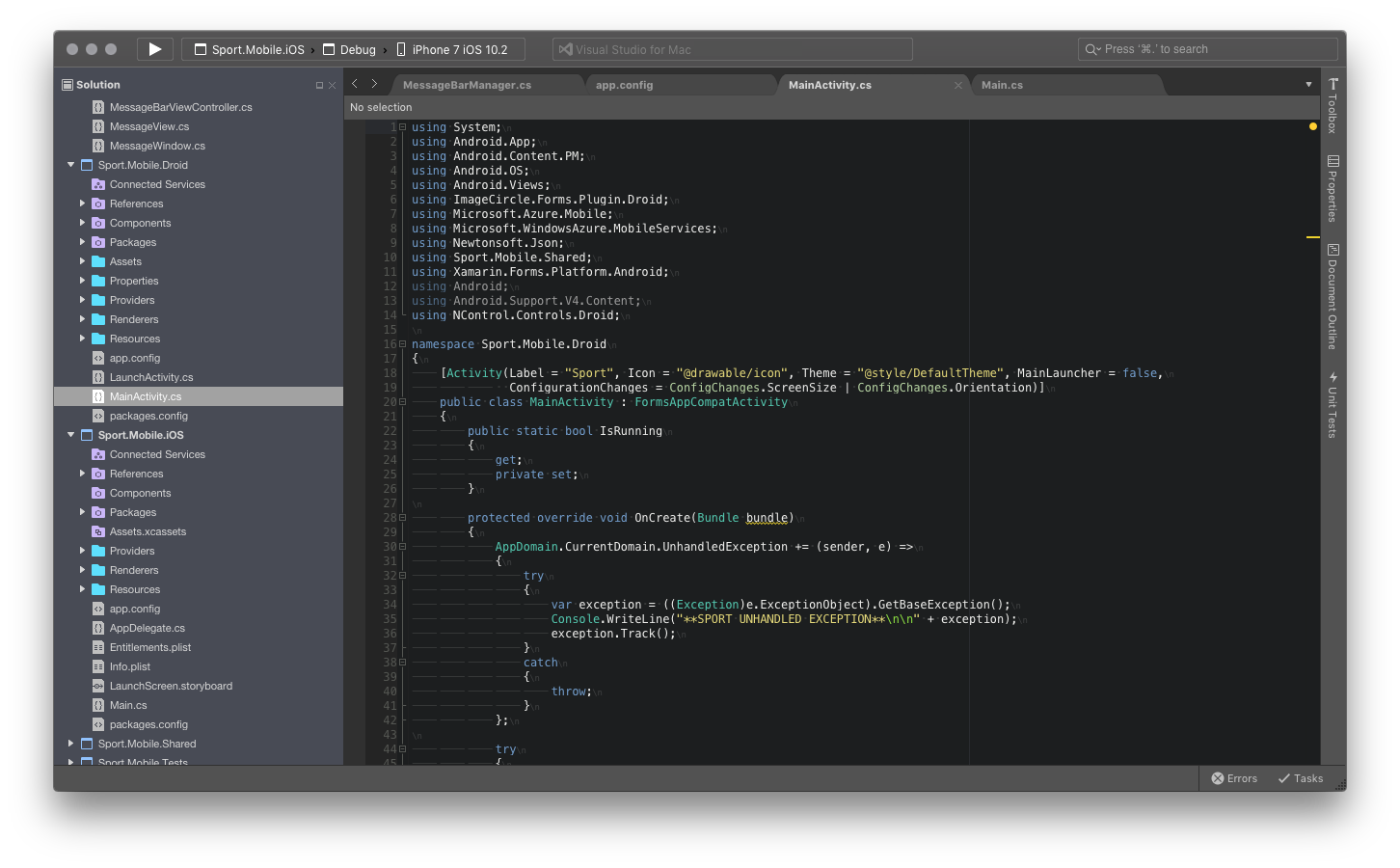

- Visual studio for mac windows phone how to#
- Visual studio for mac windows phone android#
- Visual studio for mac windows phone code#
I was puzzled as to why all the Connect() demos and presentations only showed the ‘classic’ Xamarin development approach, which has existed for 2 years. The same JavaScript, HTML and CSS can behave very different on different browser components and devices, even if you use well known cross-platform mobile JavaScript libraries. Another big time eater is finding out which of the continuously rapidly changing multitude of JavaScript libraries work well on the mobile device mix out there, in the real world. On the other hand, I’ve seen hybrid app teams struggling from up close, spending a LOT of time to get an app working on specific devices, where other devices with the same OS had no issue.
Visual studio for mac windows phone android#
So far, my experience of the past two years has confirmed this creating the Poollie app in classic Xamarin resulted in a good UX and grip on performance across 45000+ consumer devices running iOS, Android and Windows Phone.

You may also encounter difficult challenges getting your app to work (well) on specific combinations of device, OS version and browser (component) version.

However, your apps will perform, look and feel suboptimal – often significantly so (for users). Web technology also makes it easier to create a UX that is consistent across platforms – meaning you may want a consistent, non-native UX – as opposed to a UX that looks and feels familiar for each OS. Building hybrid applications with Cordova lets you leverage existing mobile web development skills, avoiding the learning curve for native UI technology. Using web technology will allow you to target more platforms in addition to iOS, OS X, Android and Windows.
Visual studio for mac windows phone code#
However, even if all your code is C#, you will have a learning curve for the native technology (mostly for UI coding/markup and UI design tools) for each platform. There are no technological barriers to achieving the maximum (meaning native) level of performance, stability and familiarity on each device. Why Native, why Web?Īs Microsoft explained quite well at Connect(), going native with Xamarin will give you apps with the best UX and it will allow you to leverage existing C# and.
Visual studio for mac windows phone how to#
Here is some shared C# Xamarin Forms code for logic and UI in Visual Studio 2015, being debugged on Apple’s iPhone simulator and Xamarin’s Android Player:īut before I show how to do this, let’s talk a bit about the why. In this post I will show how to get started building native apps with Visual Studio 2015 and Xamarin Forms, which is a powerful part of the Xamarin platform that was not shown at Connect(). The story is clear: use Visual Studio with Xamarin to create native apps in C# and native markup, or with Cordova to build hybrid apps in JavaScript, HTML and CSS. This was just one of many announcements that made clear that Microsoft is going cross-platform, and open source, in a big way.Īs a longtime Xamarin developer, it was good to see how much value and attention Microsoft gave to Xamarin in the Connect() demos and presentations. That would be Visual Studio Code, which went open-source last year.Last week at the Visual Studio Connect() event, Microsoft announced availability of Visual Studio 2015 Preview, with support for creating native iOS, OS X, Android and Windows Phone apps in C# with Xamarin. It's also not technically the first chunk of Visual Studio to make its way to Mac. Perhaps that distinction is why Microsoft pulled the blog post. Microsoft bought Xamarin in February 2016. There's one catch: it's not exactly a built-from-the-ground up version of Visual Studio, but rather ( as long-time tech journalist Tim Anderson points out) a rebranding of Xamarin. That may be why Microsoft announced Monday that a full, native version of its Visual Studio IDE (Integrated Development Environment a place to code, debug and test) is coming to the Mac.Īccording to an official Microsoft blog post (since pulled from the web), it'll launch in preview at Microsoft's Connect developer event later this week, and will "look and feel like a native citizen of MacOS." Microsoft has a problem: Many developers use Macs, and Mac developers aren't as likely to code for Microsoft platforms if they don't have tools built for their operating system.


 0 kommentar(er)
0 kommentar(er)
